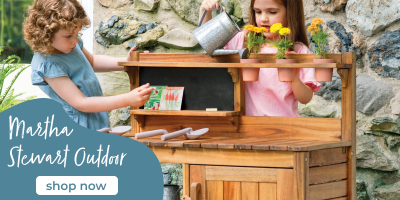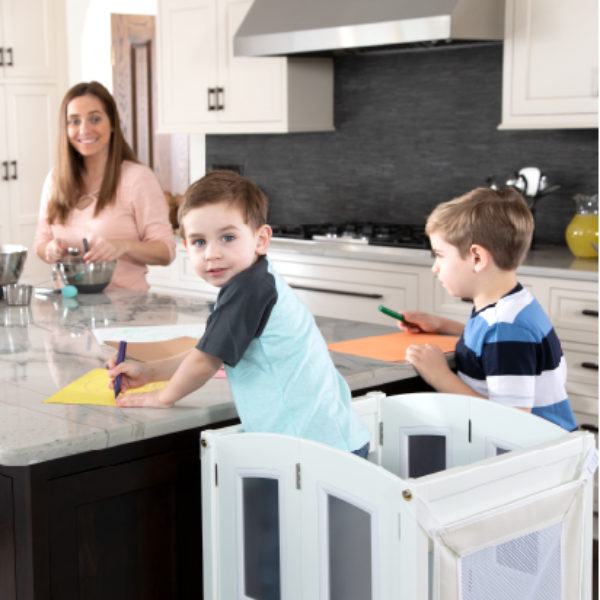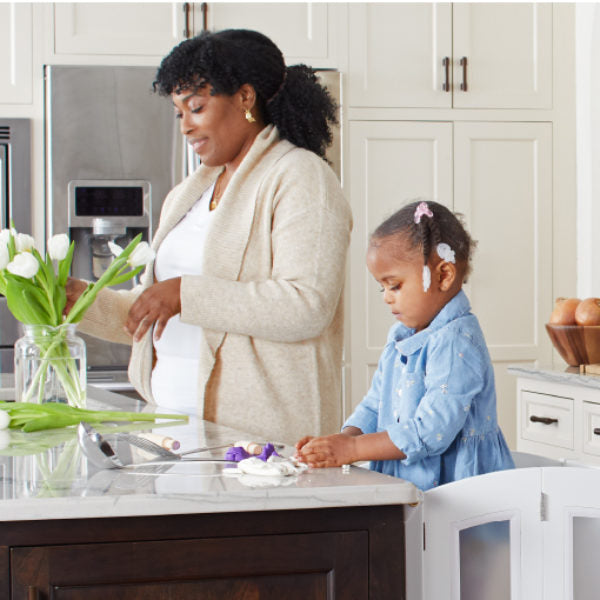Best 4 Activities for Kids Who Love to Be in the Kitchen

When you invite children to join you in the kitchen, there are many activities you can offer to stimulate their curiosity and enrich their minds. Whether it’s helping with food preparation or washing dirty dishes, these activities are beneficial to early childhood development and the learning of lifelong skills.
So which kitchen tasks are best suited for budding chefs?
Start with simple tasks that require less precision, such as scrubbing vegetables, spreading jam, kneading dough, tearing herbs or stirring mixtures. Slicing bananas and hard-boiled eggs are also ideal activities, as is using a crinkle cutter for soft foods like melons and cucumbers or hulling strawberries with a hulling tool. As children age, they may enjoy slicing produce such as cucumbers and peppers, grating cheese, squeezing citrus, peeling carrots and potatoes — and the list goes on. The range of cooking tasks that a child is capable of handling is probably greater than some parents might imagine, and a child’s confidence will flourish with the mastery of each skill.
Equipping your kitchen with the right tools and utensils can help enrich your child’s time at the counter. A stable step stool with an appropriate height, such as a Kitchen Helper, gives children the leverage and vantage point necessary to perform certain kitchen tasks with ease. Utensils that are smaller and safer, such as small wooden spoons, small spreaders and nylon knives, can also make tasks easier for little hands. Glass mixing bowls are wonderful for offering children a full view of a mixture as ingredients come together, and non-slip bowls help prevent accidental spillage if the bowl is unwieldy for your child.


Meal Preparation
When cooking or baking with children, it’s important to offer tasks that are manageable for the child’s stage of development. For example, tearing lettuce for a salad or placing toppings on a pizza are appropriate tasks for young children who have not yet developed the fine motor skills necessary for cutting or peeling. Picking tasks that fall within a child’s capabilities will help ensure that the child can complete the work independently and successfully. Children may lose interest in an activity if it proves too difficult or if the parent constantly jumps in to help or do the work for them.
It may help to pick meals that are “forgivable” so that there is room for correction, or no need for correction at all, if your child deviates a bit from the recipe. This allows children to engage fully in the cooking process without parents constantly worrying about “ruining” the recipe. When baking bread, for example, you may simply add more water if the dough is too dry or more flour if the dough is too wet. For younger children, it can also help to pick recipes that don’t involve a careful sequence of steps. For example, when making a salad, it does not matter which order you toss the lettuce and vegetables into the bowl.
Cleaning Up
Young children love water play, which makes washing dishes and rinsing produce natural tasks for little ones in the kitchen. Jobs like cleaning lettuce and rinsing dirt off potatoes are great at building focus as children inspect for dirt and grit. For dishwashing, show children how to rinse an item until it is no longer soapy and where to lay the item to dry.
Some children may prefer to use their time at the kitchen counter to wipe down surfaces. Young children enjoy cleaning surfaces with a sponge or rag and take pride in showing parents the fruits of their labor. They may also enjoy putting away silverware, which is an excellent opportunity to practice sorting skills and discern the difference between small and big spoons and forks.
Playtime

Sometimes children want to be with you in the kitchen but are not quite in the mood to help with cooking. When that happens, just invite them up to the counter to play while you cook. This is a good time to get out some Play-Doh, since Play-Doh accessories such as cookie cutters, butter knives and rolling pins overlap nicely with the theme of kitchen work. Or, of course, what child would turn down an opportunity to play at the sink? Most children enjoy simply putting their hands under the faucet and watching water cascade off their fingers, or you can offer a bowl, whisk and liquid soap for whipping up bubbles. Transferring water from one container to another keeps children busy and focused for surprisingly long stretches of time.
Packing Lunch
Children appreciate having a say in what foods they bring to the playground or on play dates. The next time you pack a lunchbox or snack bag, ask your child to help. Children can assist with spreading peanut butter and jelly onto bread or assembling deli sandwiches. You can also simply ask your child to scoop snacks into containers and cap them with lids. These are simple tasks for us, but to children it is meaningful work that produces a deep sense of accomplishment when completed.
To learn more about the Martha Stewart Kitchen Helper collaboration, and to read more about why the Guidecraft Kitchen Helper is a must-have toddler product, click HERE.


















